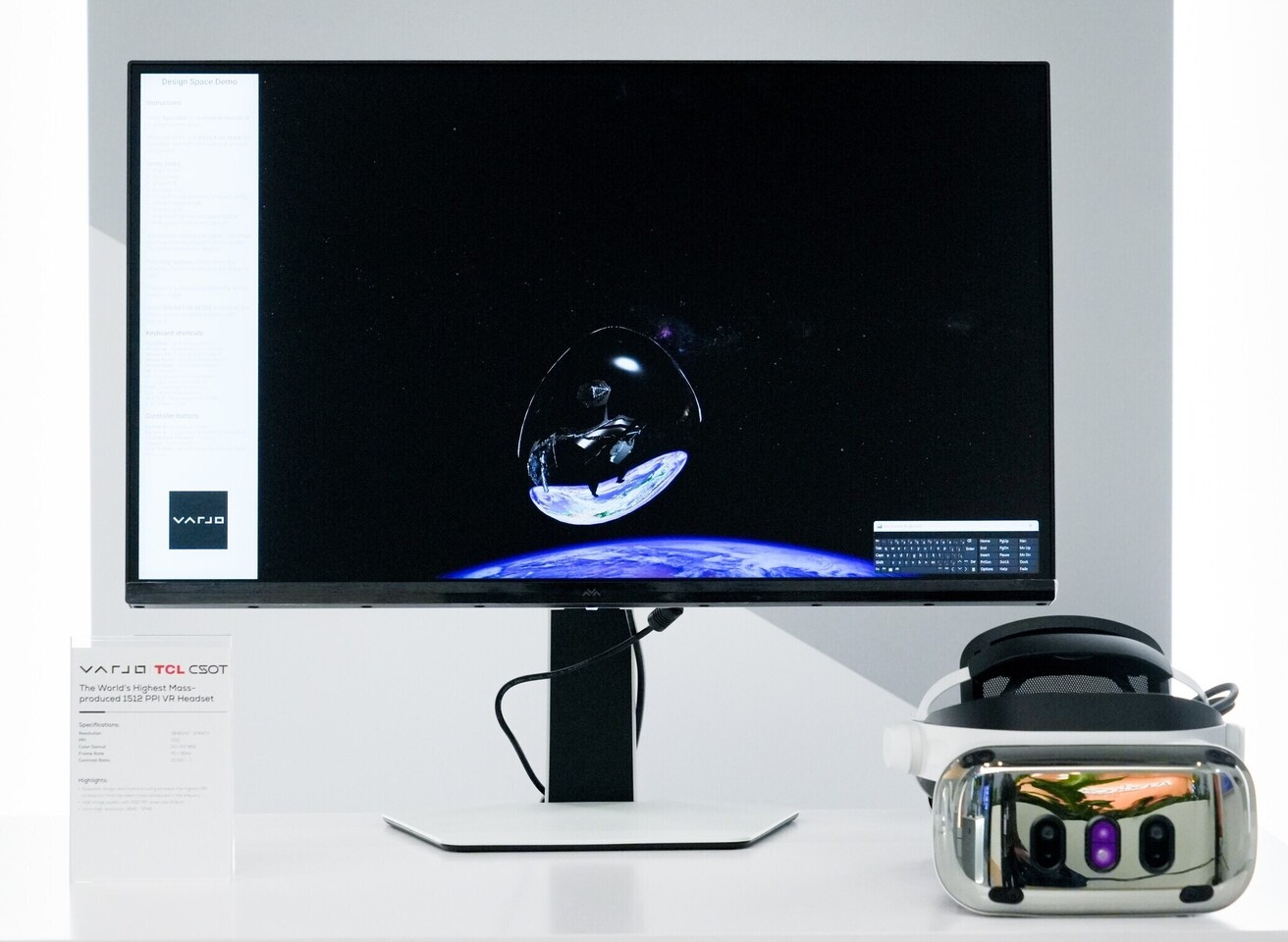TCL CSOT is revolutionizing the VR landscape with technology, including an ultra-low power consumption display and the world's first mass-produced VR display with 1,512 PPI, paving the way for a future where immersive experiences are more vivid and accessible than ever.
- Revolutionary VR technology
- Ultra-low power consumption VR display
- World's first mass-produced VR display with 1,512 PPI
TCL CSOT introduces VR Tech at MWC 2025
If you thought virtual reality was just a passing trend, think again. At this year’s MWC 2025, TCL CSOT, a titan in display technology for over 15 years, showcased some jaw-dropping innovations that promise to redefine our immersive experiences. Among the standout features were their ultra-low power consumption VR display and the world’s first mass-produced VR display boasting an incredible 1,512 pixels per inch (PPI). These advancements are not just tech jargon; they’re paving the way for a future where immersive visual experiences are more vivid and accessible than ever.
The Growing VR Landscape
Virtual reality is no longer just for gamers or tech enthusiasts. It’s becoming a vital tool in entertainment, education, and even professional settings. Did you know that around 53 million American adults currently own a VR system? And by 2029, experts predict that the AR and VR market will swell to a staggering 3.7 billion users worldwide. With such explosive growth, TCL CSOT is stepping up to the plate, determined to deliver visual technology that enhances realism, comfort, and performance in VR experiences.
TCL CSOT’s Ultra-Low Power Consumption VR Display
One of the stars of TCL CSOT’s showcase was their 2.56-inch ultra-low power consumption VR display. This little powerhouse packs a punch with a pixel density of 1,500 PPI, bringing a new level of detail to virtual environments. Thanks to advanced COA technology and a high-efficiency Mini LED backlight, this display minimizes color shift, enhances visual comfort, and optimizes power usage.
Imagine enjoying your favorite VR game or attending a virtual meeting without the constant worry of your battery dying. Compared to traditional Mini LED backlights, this display boosts luminous efficiency by 40%, meaning you get a richer viewing experience without sacrificing battery life. It’s a game-changer for those marathon VR sessions!
The World’s Highest Mass-Produced VR Display
TCL CSOT didn’t stop there. They also revealed the world’s first mass-produced VR display with a staggering 1,512 PPI. With a pixel resolution of 3840×3744, this technology offers an unparalleled level of detail and clarity. Paired with a brightness of 200 nits and 96% DCI-P3 color gamut coverage, it delivers vibrant colors and stunning contrasts that make virtual worlds feel incredibly lifelike.
But it’s not just about resolution; the display’s impressive 120° field of view (FOV) elevates your peripheral vision, allowing you to explore digital landscapes with astonishing clarity. Whether you’re designing complex graphics or diving into an immersive gaming experience, this tech enhances depth perception and realism like never before.
Collaborations Driving Innovation
TCL CSOT is not just innovating in a vacuum. They’ve partnered with industry leaders to bring these high-quality displays to consumers. For instance, their technology has been integrated into the Varjo XR-4 VR headset, which is now recognized for having the highest pixel density in the market. This collaboration is a testament to TCL CSOT’s commitment to pushing the boundaries of what’s possible in VR.
A Vision for the Future
“VR is transforming how we learn, work, and interact,” said Jun Zhao, CEO of TCL CSOT. He’s spot on. As more people dive into the world of virtual reality, TCL CSOT is at the forefront, crafting visual technologies that make these experiences not only accessible but also breathtakingly beautiful. Imagine a future where VR is as common as the screens we use daily—thanks to innovators like TCL CSOT, that future is closer than we think.



About Our Team
Our team comprises industry insiders with extensive experience in computers, semiconductors, games, and consumer electronics. With decades of collective experience, we’re committed to delivering timely, accurate, and engaging news content to our readers.
Technology Explained
DCI-P3: DCI-P3 is a color space developed by the Digital Cinema Initiatives (DCI) for use in digital cinema. It is a wide color gamut that is used to accurately represent the colors of digital cinema content. DCI-P3 is used in digital cinema projectors, displays, and other digital cinema equipment. It is also used in the computer industry for color-accurate displays, such as those used in graphic design, photography, and video editing. DCI-P3 is also used in the gaming industry, as it provides a more accurate representation of colors than traditional sRGB color spaces. DCI-P3 is becoming increasingly popular in the computer industry, as it provides a more accurate representation of colors than traditional sRGB color spaces, and is becoming the standard for digital cinema and other high-end displays.
Latest Articles about DCI-P3
Trending Posts
TSMC faces $1 billion fine for unintentionally supplying Huawei: A tech industry setback
BCM introduces MX-MTLPS Mini-ITX Motherboard for Meteor Lake-PS Platform
Meta dismisses rumors of benchmark tampering with Llama 4, igniting tech community debate.
Biostar introduces MX-X7433RE: A New Player in Industrial Computing Solutions
Matrix Games introduces Armored Brigade II on Steam for Tactical Enthusiasts
Evergreen Posts
NZXT about to launch the H6 Flow RGB, a HYTE Y60’ish Mid tower case
Intel’s CPU Roadmap: 15th Gen Arrow Lake Arriving Q4 2024, Panther Lake and Nova Lake Follow
HYTE teases the “HYTE Y70 Touch” case with large touch screen
NVIDIA’s Data-Center Roadmap Reveals GB200 and GX200 GPUs for 2024-2025
Intel introduces Impressive 15th Gen Core i7-15700K and Core i9-15900K: Release Date Imminent
